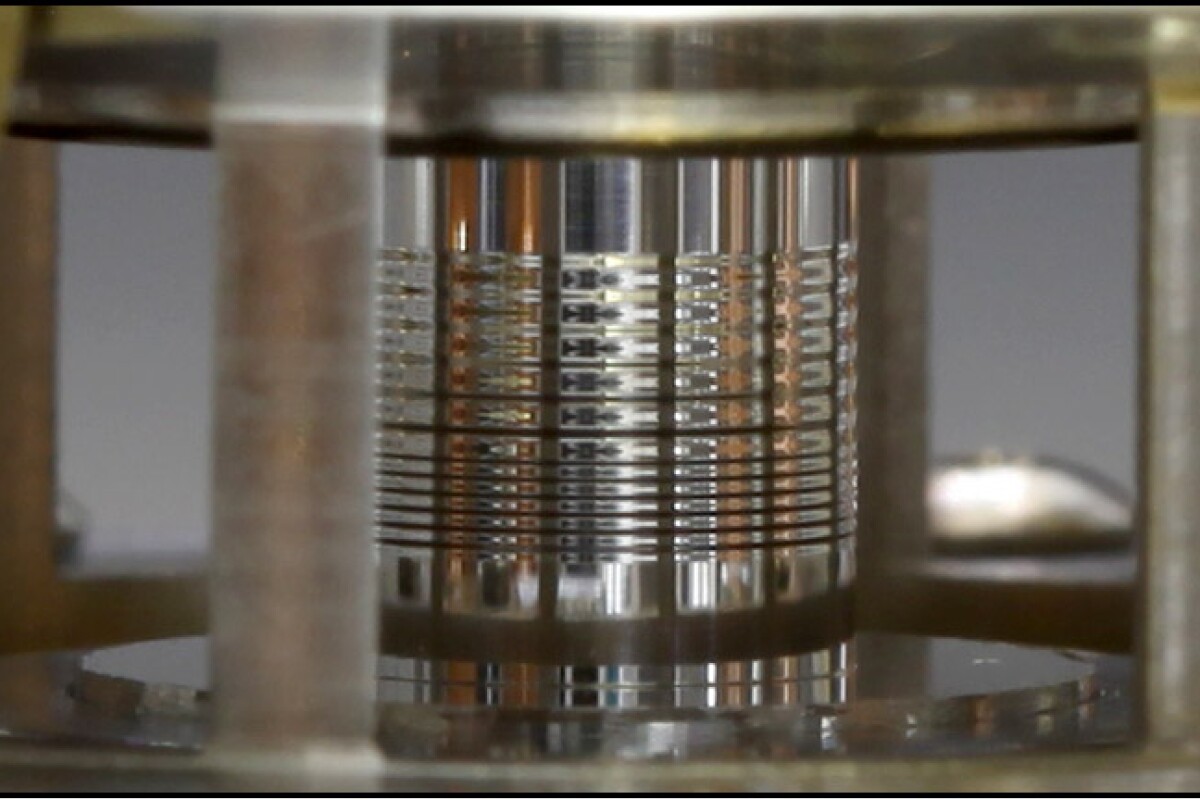Even with all the developments taking place in the areas of alternative energy such as solar and wind power, nuclear fusion still remains the holy grail of clean electricity generation. However, after decades of worldwide research costing billions of dollars, the goal of achieving “net-gain,” where more energy is produced than is required to trigger the fusion chain reaction, still remains elusive. Now researchers at Sandia Labs are claiming a breakthrough that could see break-even fusion reactions in as little as two to three years.
Research into producing energy from seawater using controlled nuclear fusion is taking place on a number of different fronts. To bring two light atomic nuclei together with enough force that they fuse, resulting in a heavier nucleus and a large amount of energy, some approaches are looking at the use of powerful lasers, while others are focusing on superconducting magnets called tokamaks, in what is known as Magnetized Target Fusion (MTF).
Z-pinch
Yet another approach involves Z-pinch – a type of plasma confinement system that uses an electrical current in the plasma (essentially a cloud of ions) to generate a magnetic field that compresses it. The pinch method, which Sandia calls a dark-horse contender in the fusion race, contracts plasma so suddenly and tightly that hydrogen isotopes from seawater, placed in a capsule within the plasma, should fuse. Until now, instabilities known as magneto-Rayleigh-Taylor (MRT) instabilities, which arise wherever electromagnetic forces are used to pinch plasma, have proven an impediment to the process. This instability rapidly crimps the cylindrically contracting plasma until it resembles a string of sausages or some other equally useless shapes, thereby causing a loss of the perfect symmetry of forces necessary to fuse the material.
So although fast Z-pinches, which take place in less than 100 nanoseconds, have already proven successful in creating fusion, (as evidenced by the production of some neutrons), MRT instability has been a major reason that not enough neutrons have been produced to provide a source of reliable electrical power.
Wires vs solid aluminum liner
Traditionally, scientists would use an array of spidery wires to create a compressed, X-ray generating ion cloud. The X-rays were then used to compress the fusion fuel. The wires were known to be the source of the MRT problem, because even minute dips in a current carrying surface – imperfections merely 10 nanometers in amplitude – can grow exponentially in amplitude to millimeter scales. Because it was impossible to reliably reproduce such imperfections with the wires to allow them to study the instability, Sandia researcher Steve Slutz suggested that the magnetic pinching forces could be used to directly fuse fuel by compressing a solid aluminum liner around fusion material preheated by a laser.
Whereas accurate etching wasn’t an option for the fragile wire arrays, the researchers could etch the aluminum liner, creating instabilities to whatever degree they desired, thereby allowing them to measure the growth of MRT instabilities. This new data could then be used to create more accurate simulations and enable the researchers to better tweak the conditions of future Z firings, more effectively combating the effect of the instability.
The researchers believe that with thick liners and control of the MRT, the Z machine could achieve an output of 100 kilojoules to match the 100 kilojoules input in as little as two or three years.
“That would be scientific break-even,” said project lead Daniel Sinars. “No one has achieved that.”
The Sandia Labs research is reported in a paper in the October 29 issue of Physical Review Letters.




